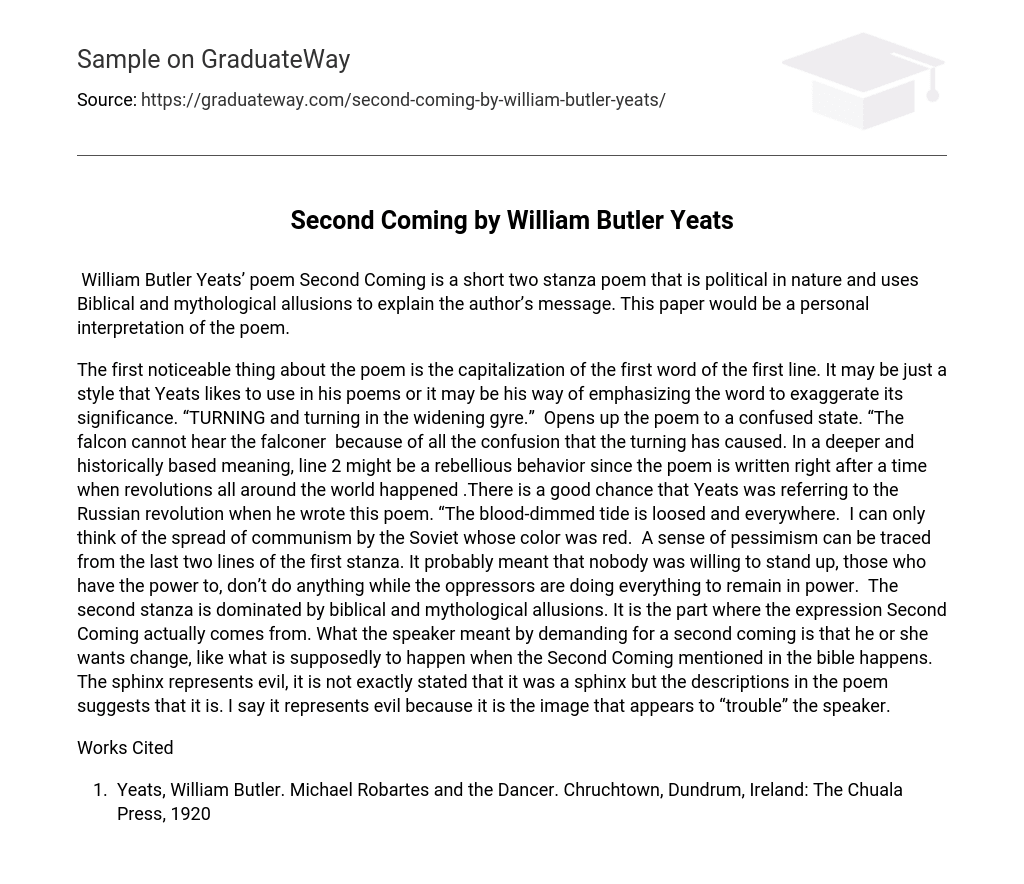William Butler Yeats’ poem Second Coming is a short two stanza poem that is political in nature and uses Biblical and mythological allusions to explain the author’s message. This paper would be a personal interpretation of the poem.
The first noticeable thing about the poem is the capitalization of the first word of the first line. It may be just a style that Yeats likes to use in his poems or it may be his way of emphasizing the word to exaggerate its significance. “TURNING and turning in the widening gyre.” Opens up the poem to a confused state. “The falcon cannot hear the falconer because of all the confusion that the turning has caused. In a deeper and historically based meaning, line 2 might be a rebellious behavior since the poem is written right after a time when revolutions all around the world happened .There is a good chance that Yeats was referring to the Russian revolution when he wrote this poem. “The blood-dimmed tide is loosed and everywhere. I can only think of the spread of communism by the Soviet whose color was red. A sense of pessimism can be traced from the last two lines of the first stanza. It probably meant that nobody was willing to stand up, those who have the power to, don’t do anything while the oppressors are doing everything to remain in power. The second stanza is dominated by biblical and mythological allusions. It is the part where the expression Second Coming actually comes from. What the speaker meant by demanding for a second coming is that he or she wants change, like what is supposedly to happen when the Second Coming mentioned in the bible happens. The sphinx represents evil, it is not exactly stated that it was a sphinx but the descriptions in the poem suggests that it is. I say it represents evil because it is the image that appears to “trouble” the speaker.
Works Cited
- Yeats, William Butler. Michael Robartes and the Dancer. Chruchtown, Dundrum, Ireland: The Chuala Press, 1920





